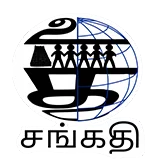
By Rathindra Kuruwita
The costs of Sri Lankan apparels would be much higher than those of its competitiors’ products if the Ceylon Electricity Board (CEB) increases the tariffs again, Deputy Chairman of the Joint Apparel Association Forum Sri Lanka (JAAFSL), Felix Fernando, said.
There had been a drop in exports, following the electricity tariff hike, in August, last year, he said.
“There is a drop of about 20 percent. This trend will further continue, and everyone will lose out,” he said.
Fernando added that in most factories electricity was the third highest cost incurred after materials and salaries. On average the cost of electricity is around 3.5 percent, he said.
“Exporters are struggling even now; it will be really difficult in the coming months, given the future trends. Exporters are paying higher taxes and the demand is less because there is a global downturn. Now, we are told that the price of electricity will increase by 65 percent in January. Forget the small and medium scale enterprises, I think even large-scale companies will be in trouble,” he said.
Fernando said that before the August 2022 electricity hike the cost of production was slightly below Sri Lanka’s competitors. “However, now we are at a Vietnam cost level. More hikes in the electricity tariff and our costs will be more and we won’t be able to compete. Would a customer want to spend more on Sri Lankan products because they feel sorry for us? In a global downturn no one will think like that,” he said.
Fernando said that the CEB is producing energy using highly costly sources, such as diesel, and there has been no attempt to move to cheaper alternatives. The previous government had promised 70 percent renewables by 2030, he said.
“The current government also talks about renewable energy but nothing has been done to increase its contribution to the energy mix. There is no plan to boost renewable energy production,” he said.
Fernando also questioned the CEB’s projected losses for 2023. He said that before the tariff hike in August 2022, the daily demand for electricity was around 48 gigawatt hours.
“By 19 December 2022, the demand had dropped to 36 gigawatt hours. People are using less electricity because they can’t afford to pay. Like any product, people are using it less as prices go up. The demand is down not only because households are using less electricity but also because factories are closing at a rate. So, I don’t understand how the CEB has calculated the cost of production for 2023. There is an economic contraction,” he said.

